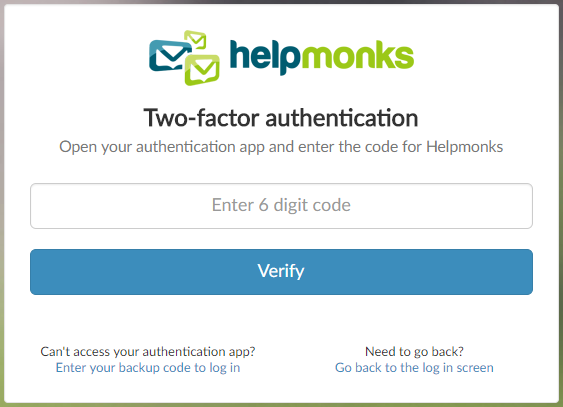
Introducing new pricing for Helpmonks
Discover Helpmonks' new pricing structure, featuring a flexible PRO plan, a FREE plan for smaller teams, and an exciting affiliate program. Experience unparalleled email management solutions today!
Read nowCustomers with a strong attachment to a brand give 23% premiums over average customers who are not as invested in the company. This means that investing in relationships with your customer base can pay off—literally!
All it takes is a strong customer engagement strategy focused on customer support and customer satisfaction.
Whether you're an expert or a beginner, you have what it takes to dominate customer service and create a memorable customer experience. To get started, keep reading. We've laid out everything you need to know in our customer engagement guide.
Customer engagement refers to the process of interacting with customers. These interactions can take place through a variety of channels.
The goal of customer engagement is to interact with your customers to build a strong relationship with them. To do this, companies work on improving the quality of the relationship as a whole, i.e., turn prospects into loyal customers.
Customer engagement ties together today's customer-centered world of business.
Measuring customer engagement is key to improving conversion rates. You can't accurately measure any amount of success without realizing where you are right now. You have to have a starting point.
Luckily, you can focus your attention on plenty of metrics while you're interacting with and getting to know your customers.
Guest Checkout Rate = the number of orders completed by a guest/Total number of orders.
This metric looks at the number of customers who make purchases without making an account. Most often, customers who haven't created an account with your business aren't likely to return for another purchase in the future.
Of course, you want customers to come back for more after they've made (and hopefully enjoyed) their first purchase. But, customers aren't likely to go out of their way to reach out to you to create an account. A high guest checkout rate may tell you that you need to do more when advertising your membership program/account feature.
Purchase Frequency = number of orders in the last 365 days/Number of unique customers in the previous 365 days.
This metric evaluates how often customers buy from your store.
Some individuals may be tempted to believe that a lower purchase frequency is better. It means that you're drawing more customers to buy from your business.
However, it also means that most of these customers aren't coming back a second or third time. It may be significant to draw in a big crowd. Still, you're going to run out of active customers if everyone keeps leaving after one purchase.
The higher the purchase frequency is, the better your emotional connection with your customers is. Emotionally-bonded customers are much more likely to make multiple purchases often. So, taking the time to make emotional connections with customers is vital.

Average Order Value = Total revenue over the last 365 days/Total number of orders placed during the previous 365 days.
The average order value tells you the average amount of money a customer spends when ordering your products. The higher it is, the more that your customers are buying in terms of value.
Repeat customers are much more likely to spend more per purchase than one-time customers. They spend 67% more money on average.
So, investing in repeat customers isn't just a way of creating a strong bond with an individual. It's also a way of ensuring that you're going to bring more money in per person.
Repeat Purchase Rate = the number of customers that bought more than once/Total Number of customers.
This metric is arguably one of the most important metrics to consider. This gives you a concrete look at how many of your customers are making repeat purchases.
You're not looking at the numbers. You're not looking at the products sold. You're glaring at a concrete number that gives you an idea of how well your current customer engagement strategy towards customer loyalty is doing.
Overall, the repeat purchase rate gives you a clear picture of whether or not you're retaining customers. The most engaged, emotionally-involved customers are going to be more likely to make more than one purchase with your store. This is the metric that you'll want to measure now and remeasure at least once a year. It is a clear, easy-to-understand metric that any company can learn from.
No customer engagement strategy is complete without solid customer engagement marketing. This term refers to the marketing strategy that a business uses to interact with its customers. The best situations refer to the strategy that gives timely, relevant, and personalized messages to consumers.
Set your customer engagement marketing strategy apart from other business strategies. Focus on personalization. The more personalized your messages are, the more your customers know that you care for them.
As we've discussed, this personal interaction is the key to winning your customers over.
Besides, timeliness and relevancy also matter. If your customers are receiving messages that don't apply to them, they're going to get frustrated. It doesn't make sense to send an email about a review to a customer who hasn't purchased an item in months.
Take the time to create and use an effective marketing strategy. It can improve customer engagement. Plus, it will sustain your customers' attention and provide direct lines of communication.

Another term to know is "customer engagement platform." This refers to software that centralizes the communication that a company has with its customers. It may also track customer behavior in real-time.
All in all, customer engagement platforms help company representatives. It makes responding to customer communication more efficient. Having all communication networks in one space makes it easier for employees to see and respond to all of the messages.
Plus, customer engagement platforms can give great insights. These help employees understand customer behavior. Most notably, they help employees crafting more personalized messages during a live chat session or in a follow-up email.
These analytics look at customer data and industry patterns. From marketing to sales, the platform can help you figure out where the customer is in their journey to engage them in the best way possible.
Invest in a multi-faceted customer engagement platform. It will help your employees interact with your customers better than ever.
Without solid customer engagement, you aren't likely to see a great relationship with your customers. The old way of composing flashy advertisements doesn't work with today's audience. These customers are looking for companies to care about them before they buy any products or services.
Take the time to create a meaningful relationship. This will cause the customers to become emotionally attached to the brand. Therefore, this causes them to care more about its products and services.
The best customers are firmly attached to a company's mission, values, and vision. They care about how the company's representatives act, what the company's brand looks like, and more.
The customer journey is a chronological understanding of the steps that customers go through with a company. If a customer purchases from a company, they've gone through the bulk of the customer journey. From the initial contact to the moment of decision making, the customer journey captures it all.
Throughout the customer journey, there are events that the industry refers to as "touchpoints." These points represent interactions between a customer and a company.
Touchpoints often appear throughout the customer journey, and they make a difference in how the customer journey ends. However, they also tend to be dry.
You have to communicate with your customers consistently. If not, you may be leaving your customers without contact for too long. This doesn't mean that you should be sending customers five emails a day.
Instead, we're referring to the fact that you should be communicating with customers around these touchpoints. For example, a customer may call your service department. This may prompt you to send an email asking the individual how their customer service experience was.
Find ways to interact with customers before, during, or after each touchpoint. Each point of communication can help form that emotional bond that you're looking for.
Keep in mind that it's not a battle of who can communicate the most often. Instead, you're looking to maximize customer engagement by communicating regularly with your customers. Make your company appear caring, attainable, and flexible.
The customer experience refers to all of the interactions that customers have with your company. When those interactions are consistently positive, they are likely to become more engaged and invested. They may even become brand advocates by telling their family and friends. You might even get lucky, and they take to social media and let their followers know about your brand.
However, this could all change with just one negative experience.
One negative experience or unresolved problems could ruin any customer relationship, no matter how strong it was before the instance. This is why good, attentive customer service from your support team is so important.
Your customer service team will be patching relationships, making ends meet, and otherwise saving your business. By repairing your relationships with your customers, your customer service team is holding your company on its shoulders.
Luckily, customer service isn't what it used to be. There are new, better ways of providing means of communication between your customer service team and your customers:
Investing in a shared inbox is the best way to handle all of these channels of communication. Your team can work on communicating with all customers quickly and personally.

Customer retention refers to the likelihood of a customer to continually invest in a business. The key to getting these customers to stay loyal to your company has a strong customer engagement strategy.
The more emotionally attached to your brand your customers are, the more likely they will continue to invest in your brand. To praise and reward these customers for staying loyal, consider offering additional programs:
Suppose you're having trouble understanding your current customer retention rate. In that case, you should look into the analytics for product engagement, churn rate, and referral rate. The more you can understand your customers' behavior, the better you'll respond to your customers in all scenarios.
Customer engagement is everything in today's world of consumerism. There isn't a company out there that can survive without establishing a meaningful connection with their customers.
So, suppose you want to survive and thrive in today's economy. In that case, you need to have a sturdy customer engagement strategy that wows your customers. Your goal is to bring them back for more.
First, you need to make sure that your company has a clear vision and a consistent voice. As we discussed, customers care about the company's mission, values, and the image they're going to invest in.
Without a clear and consistent stance, you're not going to bring customers closer to your brand. You may do more harm than good as customers become confused about what your actual message is.
Take the time to develop a brand that you and your customers will be proud of. Develop a company vision and name company values that your customers would be happy to stand behind.
It would be best to understand how you will put this vision and voice to use in your customer engagement strategy. Customer experience is too broad to follow blindly.
Set goals and objectives for your team to focus on. Hone in on your organization's strength and keep the customers at the center of everything you do.
Customer service is everything. It's the difference between you having a customer and losing a customer.
Without quick, helpful, personalized customer service, your company won't have much. When it comes to customer engagement, the exemplary customer service structure is invaluable.
Customers shouldn't have to deal with unhelpful or inaccessible help. You should be clear about the best ways for your customers to contact you. You should reach out to them every once in a while.
Many companies invest in email automation for these kinds of interactions. Sending an automatic email a few days after a customer purchased something from your company can make a big difference in that person's experience with your business. It can even improve their perception of your business.
Sending an email shows several things:
Crafting a solid bond like this is one of the best ways to keep customers coming back for more. Prove that you care about value by building a reliable customer service experience.
Without the right kinds of software, your team is left to do everything themselves. No matter how motivated and ready they may think they are. They still need modern software to reach current customers.
Don't settle for a regular email inbox. You should invest in a shared inbox that can give your employees access to everything they need to interact with and provide help to your customers.
If you find that a certain kind of software isn't working, put your money elsewhere. Don't settle for less than your employees and your customers deserve.
When in doubt, ask your employees how they feel about the software that they're using. They likely have an opinion about how helpful it is.
Personalization is everything in today's marketplace. People are looking for a genuine connection with a company that cares.
Building a personal experience makes your customers feel like you're talking to them directly. Even if you automate your communication, your customers will feel like the email came directly from you.
By keeping the conversation timely and relevant, you're going to impress your customers and make them feel valuable to the company.
If your strategy isn't working, change it. If your customers aren't happy, change what you're doing. There's no point in using methods that aren't helping.
If you find that there is a weakness in your strategy, you should immediately change. One negative interaction could change everything between your business and its customers.
If you're unsure about what to change, look at your history. What have your customers responded to in the past, and how can you bring that back?
Effective customer engagement strategies are everywhere. Suppose you're looking for more ideas that you can apply to your customer engagement strategy. In that case, all you need to do is look at the companies around you. There are plenty of examples of companies that are creating customer engagement experiences to remember.
This includes the following two, significant companies:
Looking at these customer engagement strategies of these large, successful companies in depth can help you see where you may need to improve your strategy. Coca-Cola and Starbucks may have much to offer to your customer engagement brainstorm.
If you live anywhere in the world, you've probably heard of Coca-Cola. They're a massive brand that has built one of the most unique and memorable customer engagement strategies out there.
Their Share-a-Coke campaign that launched in 2014 took their customer engagement to a new level. Instead of placing the classic Coke label on their bottles, they put common names, titles, and phrases.
People were buying Cokes simply because their name was on the bottle. On social media, customers shared their names on Coke bottles and bought those Coke bottles that had names of their family and friends. It was a massive, personalized campaign that still proves profitable for the company today.
By engaging their customers successfully, Coke changed the notions that people previously had about advertising. Coke was one of the major companies that led to the customer-centric advertising models that the industry uses today.
Starbucks is another well-known brand, although it is most popular in the United States. Regardless, the company has also done a lot in the realm of customer engagement.
Starbucks opened the Starbucks Reserve Roastery and Tasting Room. This offers a unique experience in which customers can talk to coffee experts while watching them brew coffee. The customers also get to taste the coffee.
It's a multi-sensory experience that would have any Starbucks fan screaming for more.
Starbucks customers that do get the join in on the experience feel like they're becoming part of the complete coffee experience. They're getting to look at how the company operates and what they do to make their coffee.
This coffee room brings a new appreciation for the company. In turn, Starbucks has mastered the customer experience. They've created a close bond with customers.
The customer now knows the company's work to bring him or her a cup of coffee. The customer now has a greater understanding and appreciation for the work that went into that cup of coffee.
This appreciation is a strong emotional bond that will likely lead to more sales, outstanding brand advocacy, and brand loyalty.
Creating a successful customer engagement strategy is just a few steps away for you and your team. However, you can't reach your customers the right way without investing in the right platform.
Our team at Helpmonks has created a revolutionary platform. It contains a shared inbox, marketing automation, customer interaction, and more. No matter what your team is doing, we're here to equip you with the resources you need.
Try our platform today with a free trial. The sooner you get started, the sooner you can begin to mending customer relationships.

Discover Helpmonks' new pricing structure, featuring a flexible PRO plan, a FREE plan for smaller teams, and an exciting affiliate program. Experience unparalleled email management solutions today!
Read now
Dynamic email signatures increase brand visibility, build brand identity, and boost conversions. Learn how to create and update dynamic email signatures.
Read now
Looking for an email marketing automation software? This guide shows what to look for. We'll also review the best tools for your online marketing needs.
Read now
Using customer engagement solutions helps you keep your existing customer base and grow. Here are the top 10 customer engagement solutions for your business.
Read now
Empower your team and delight your customers.
